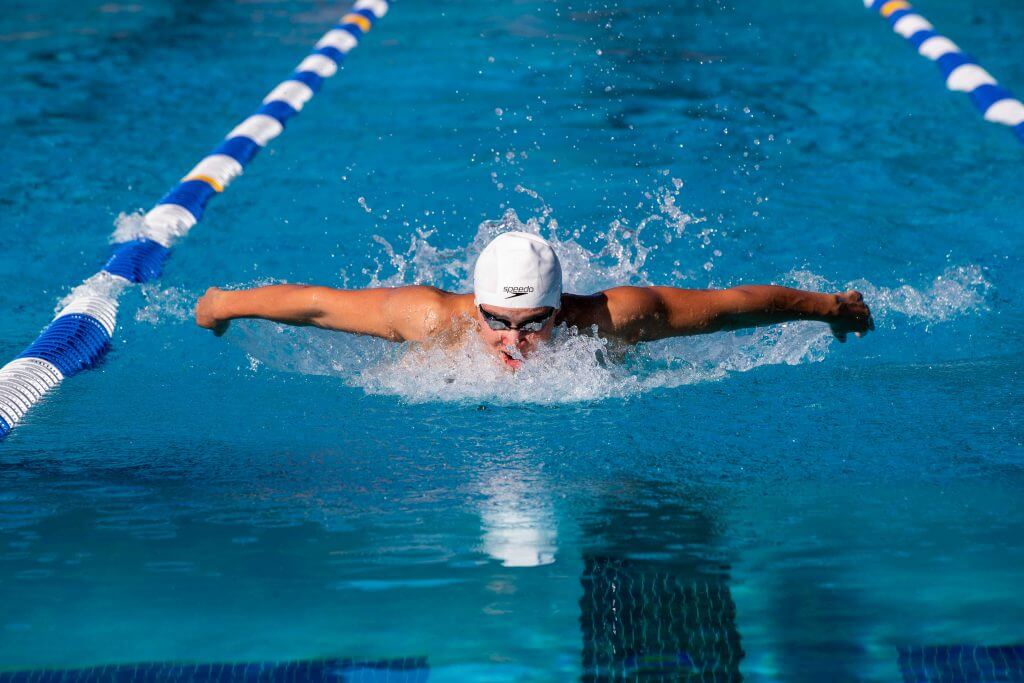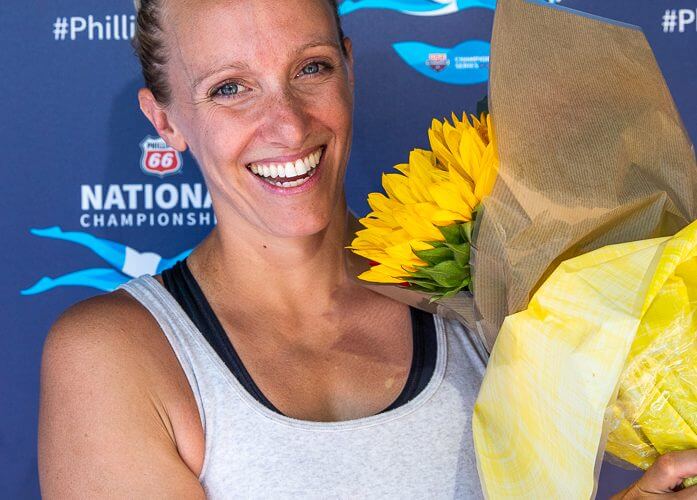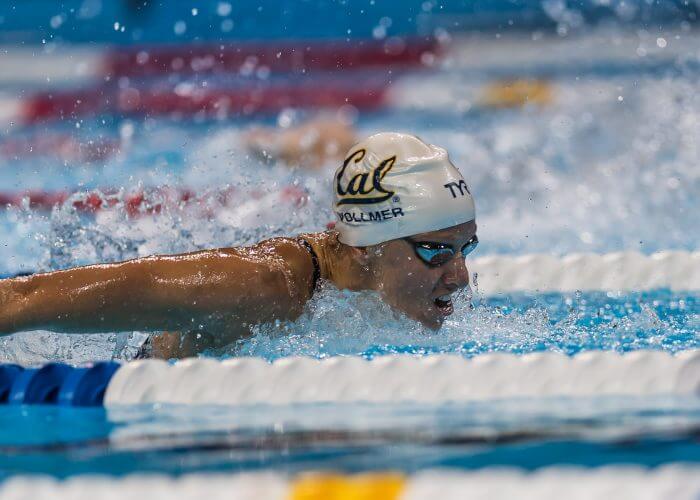What A Dislocated Shoulder Can Mean As Luca Urlando Begins Healing Process

There is little worse that injury at the start of Olympic year for the swimmer dedicated to making the cut for the Games. In the United States, that also means getting past the toughest domestic test in the world: the U.S. Olympic Trials. No let-out clauses, no discretion of selectors and coaches, no way round it – you show up and finish top 2 in any race and you get to represent the World’s No 1 swim nation in the ultimate arena of your sport.
Not hard to fathom, then, how Luca Urlando and those closest to him are feeling right now after he revealed the terrible truth this week: a dislocated shoulder.
A good moment to look at what that may mean, not for Urlando specifically (that would require specific diagnosis and knowledge of the precise nature of his injury) but in general when it comes to shoulder injuries.
Swimming World turned to Kipp Dye, MSPT. Currently the owner of OrthosportsMED Physical Therapy, Dye graduated with a Master of Science degree from Simmons College (1996) and obtained his undergraduate education from the University of California at Berkeley (1986).
His knowledge includes that of an accomplished competitive swimmer: a high school and NCAA Division I All-American, and gold medalist in the 50m backstroke at the 1998 World Masters Games, he understands water therapy and fitness and works with those who have orthopaedic conditions such as arthritis, sports injuries, and post-surgical conditions. His areas of specialty are foot and ankle, shoulder, and knee conditions.
The inventor of the numerous therapy and fitness products including the massage foam roller, Dye has worked with the likes of Dana Vollmer (her case recalled, see below). When asked about Urlando’s injury and predicament, Kipp Dye said: Unfortunate to hear he dislocated his shoulder. There are different nuances to consider with shoulder dislocation in terms of severity and specifics of which aspects of the shoulder are injured .” Speaking in general, he added:
“Usually it’s an anterior dislocation. Another relevant issue is there any injury to the labrum? And if there is to what extent. In rehabilitation, early on, range of motion is restricted then followed by a progression of motion, strengthening, postural and sport-specific mechanics training, and appropriate usage of heat and ice. Since there is a wide range of presentations in the clinic with those who have dislocated their glenohumeral joint a careful assessment has to be done followed by an specific plan of care to allow the injured athlete to recover the most effectively with the least amount of time lost between the time of injury and when the athlete returns to competition.
In the UK, the National Health Service issues this general advice for those who dislocate shoulders.
The following from Total Sports Medicine Explains what happens when a shoulder dislocates, concluding that a sportsperson might be back in full action “within four to six months”, putting in perspective the questions Urlando may now be facing, depending on the severity of his injury:
Scapular Plane Swimming & The Case Of Dana Vollmer
Dye has worked extensively with ‘water-whisperer’ Milt Nelms optimizing biomechanics of the swimming strokes. They developed Scapular Plane Swimming together.
Olympic 100m butterfly champion Dana Vollmer sustained a shoulder injury in summer 2013 that might have dictated surgery and a much lengthier rehabilitation period for her had it not been avoided by careful therapy.
Vollmer only revealed the injury in January 2014 and by then she had been out of the water since Thanksgiving. Eight weeks of therapy stretched before her before a decision would have to be made: knife or no knife.

Dana Vollmer at 2019 USA nationals – Photo Courtesy: Connor Trimble
Vollmer consulted Dye after discolouration of the skin appeared on her right shoulder. Coached by Teri McKeever at Cal Berkeley, Vollmer had all but resigned herself to surgery as the likely outcome after cortisone shots beyond Barcelona 2013 World titles and again at Thanksgiving that same year – as well as a total rest from the water – did not resolve the problem.
Dye was able to offer Vollmer a crumb of comfort, however: physical therapy, if done correctly based on his assessment, might end in a full return to training and competition without the need for surgery. The focus, prior to Dye’s assessment, was a sprain and Dye noticed Vollmer had a significant imbalance of the muscular strength in her shoulder giving Dye the perspective that surgery probably wouldn’t be necessary.
Vollmer, who back in Barcelona in 2013 walked out of the world-title 100m butterfly final with tears filling her goggles knowing that the setback caused by the injury would hamper her performance, sustained the sprain to her rotator cuff at the Santa Clara meet in the build up to trials earlier that summer.
She explained how a need to practice her 50m butterfly speed for World titles had given rise to the injury: given what she said was a general lack of 50m stroke events at meets in the US at the time, she had swum butterfly in the fastest heat of a 50m free race at Santa Clara. On butterfly, she found herself back from the pack at the end of the race and bringing her arms over the surface just as the wave created by the leading freestylers about her rebounded off the wall back down the pool.
The sheer force of that wave knocked her arm back, sheering or spraining the ligament. The doctor explained that they were looking at an impact injury far more commonly associated with football rather than swimming.
“I’ve had so many injuries in my career, that It was like ‘here’s another one’ and so I just didn’t care to talk about it at worlds. I had a job to do,” recalled Vollmer at the time. She recalled issues with her left shoulder that dated back to 2003 and a back injury at the time of her first Olympic campaign back in 2004.
Speaking about Vollmer’s case, Dye said: “I think she could make a full recovery in six to eight weeks. At the end of that period, we’ll be able to determine if surgery is required or not. In that case, a physician would decide the best course of action.”
Vollmer came to benefit from work that built strength in the soft tissue around her shoulder blade and restored balance to a swimmer who would laugh when pointing out that her right shoulder has long been lower than her left shoulder. She said that was down to bad habits ingrained in her as a young swimmer:
“Years of being told to be long [streamlined, with hands overlapping and arms outstretched ahead] in the water contributed to that.”

Dana Vollmer at 2016 Olympic Trials – Photo Courtesy: Peter H. Bick
She also noted that she had been told she was losing 0.014sec every time she breathed to one side on freestyle. So she stopped and took to ‘leaning’ on one arm as she breathed only to one side, another factor that may have weakened her shoulder.
Vollmer, the first woman ever to break 56sec over 100m butterfly when she claimed London 2012 gold, had never been stronger than she was in preparation for the Games with coach McKeever and through the work she undertook with Nelms. He helped her to think about posture and set her reconditioning exercises that had some delightful but, as far as she was concerned, unexpected outcomes.
Running had long been painful for her but after a time working on Nelms’ program, she said: “I could run again, without pain. It was an amazing feeling.” She recalled:
“I’ve always wanted to run. Back in middle school I ran on the track and played basketball but the better I got at swimming, the worse I got at all the rest. Then in 2004 with the back injury I got that year, I really couldn’t run anymore.”
Nelms, who takes a sensory approach that relies on feel, perception, symbiosis with water and the harnessing of untapped energy sources locked in the body by ’21st century lifestyle’, worked with Vollmer to iron out bad habits and practices ‘taught’ to her through traditional approaches to preparation”.

It made a world of difference. Said Vollmer:
“It was kind of like relearning how to use my body. I was being kind of overprotective of my back even though my back wasn’t injured any more. It now just feels like everything works so much better. I was taught an emphasis in swimming on being ‘long’ and I would take that into running but it just doesn’t work.” Poor posture and unnatural running position followed.
Vollmer stopped trying to be ‘long’, neither on land nor in water. As London 2012 gold proved, there were better ways to a dream of a 54sec 100m butterfly that Nelms told her she was capable of at a time when her personal best was a 57.
The rest is history.



